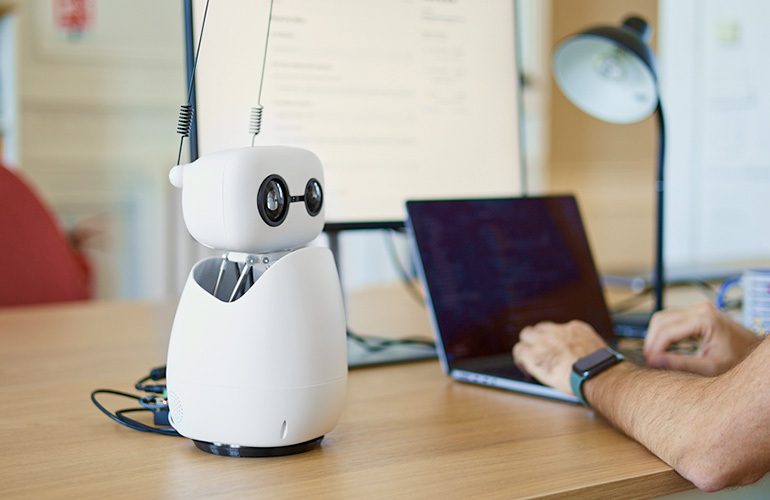Hugging Face’s Reachy Mini: The Future of Robotics is Here
Just five days into its launch, Hugging Face has hit an impressive milestone of $1 million in sales for its Reachy Mini robots. That’s not just good news; it’s a sign that we might finally be moving towards a future where robotics becomes a part of everyday life, making it more accessible to you and me. So, what’s the deal with this little robot? Let’s dive in!
A New Kind of Companion
Imagine having a robot on your desk, not just sitting there but interacting with you, responding to your commands, and even letting you tinker with its programming. That’s exactly what the Reachy Mini is all about. Co-founder Thomas Wolf describes it as “a bit like an empty iPhone,” hinting at the endless possibilities for app development.
Wolf sees this robot not as a chore-doer like some competitors, but as an entertainment piece that encourages curiosity. It’s small enough for your workspace and comes equipped with quirky features: misshapen eyes holding cameras, antennas for ears, and a personality all its own. More importantly, it’s designed for you to hack—yes, you can build your own apps. How cool is that?
An Approach That Makes Sense
You might be wondering: why would anyone want a robot for their desk? Here’s the scoop: Wolf claims this little gadget is more than just a tech toy; it’s a gateway. It could ease us into the idea of having robots in our lives, building familiarity and, dare we say, trust.
People often hesitate when they think about adding robotics to their home. It can feel intimidating, but the Reachy Mini is like a friendly guide in that journey. It’s designed to be affordable, making it easier for you to take the plunge into AI-powered living. Plus, who doesn’t want a chatty little companion to share their workspace with?
The Bigger Picture: Expanding Beyond the Desk
So, what’s next for Hugging Face? In the latest episode of the Equity podcast, Wolf spilled the beans about future ambitions, including envisioning a full-sized humanoid robot and emphasizing the importance of open-source AI in the robotics space.
And let’s not ignore the practicality of privacy in consumer robotics—Wolf thinks open-source approaches can really help here. It’s like having a safety net; you’re in control of what your robot can access. That’s a big deal, especially as many consumers are increasingly concerned about their personal data.
Is This the Future We’ve Been Waiting For?
Honestly, I was skeptical about the Reachy Mini at first. But as I listened to Wolf, I found myself a bit more intrigued. The idea of coding apps for a robot invites a unique blend of creativity and tech learning, especially for kids or anyone new to open-source. Just think about it: encouraging kids to solve problems in an interactive way. It’s almost like a 21st-century version of learning to ride a bike—fun, a little scary, but incredibly rewarding.
What to Keep an Eye On
Here’s what you should look forward to:
- How Hugging Face will navigate the shift from software to hardware.
- The exciting prospect of owning a full-sized humanoid robot down the line.
- Privacy features to ensure safe consumer experiences with robots.
Equity is TechCrunch’s flagship podcast, produced by Theresa Loconsolo, releasing episodes every Wednesday and Friday. If you want to catch up on the latest tech trends, you can subscribe to Apple Podcasts, Overcast, or Spotify among others. Don’t forget to follow the show on X (Twitter) and Threads at @EquityPod.
So what’s your take? Could a little robot on your desk change how you interact with technology? Let’s chat in the comments!
